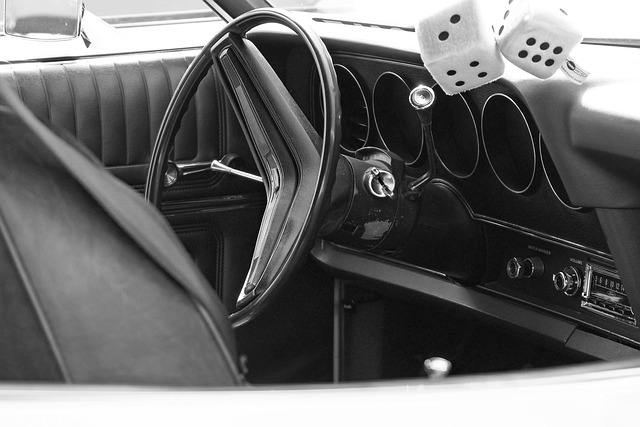Registering a car in California involves several straightforward steps, ensuring your vehicle is legally recognized on state roads. To begin, gather essential documents like proof of purchase, insurance, and ownership. Next, visit your local DMV office or use a DMV VIN verifier online to confirm your vehicle’s identity via its unique VIN number. After verification, complete application forms, pay registration fees, and obtain your new license plate. This guide breaks down each step for a smooth process.
- Prepare Required Documents for Car Registration
- Visit Your Local California DMV Office
- Verify Vehicle Identity Using VIN Number
- Complete and Submit Application Forms
- Pay Registration Fees and Receive License Plate
Prepare Required Documents for Car Registration

Before you start the registration process, it’s crucial to prepare all the necessary documents. This includes your vehicle’s title, which proves ownership and must be signed over to you by the previous owner. Also, gather identification documents such as a valid driver’s license or state ID card. The DMV (Department of Motor Vehicles) in California requires these to verify your identity. Additionally, you’ll need proof of insurance, which can often be provided by your insurance company on a mobile vin verifier app, and possibly a completed odometer reading certificate if your car is newer than 10 years old.
A mobile vin inspection or using a dmv vin verifier service can also be beneficial. This process involves checking the vehicle identification number (VIN) to ensure the car’s history is clean and free from any accidents or outstanding issues. Having this information beforehand streamlines the registration process at your local DMV office, so make sure you have all these documents ready before you visit.
Visit Your Local California DMV Office

Visiting your local California DMV office is a crucial step in the car registration process. Here, you’ll initiate the procedure by providing necessary documents and ensuring your vehicle meets all legal requirements. The DMV staff will guide you through the process, which includes verifying your Vehicle Identification Number (VIN) to ensure its authenticity and history. This verification process, often conducted using advanced VIN verifiers, plays a vital role in ensuring only legitimate vehicles are registered.
Additionally, if needed, you can opt for a mobile VIN inspection or service, allowing for convenience and flexibility. These services, typically offered by authorized agents, bring the VIN verification process directly to your location, saving you time and effort. This alternative is especially beneficial for those with busy schedules or accessibility challenges, ensuring a seamless transition towards registering your vehicle in California.
Verify Vehicle Identity Using VIN Number

To ensure that you’re dealing with a legitimate vehicle, the first step in registering your car in California is to verify its identity using the Vehicle Identification Number (VIN). This unique 17-character code acts as a digital fingerprint for your vehicle and can be used to access crucial information about its history. You can use a DMV VIN verifier or even a mobile vin verifier app to cross-check the details against manufacturer records, ensuring that the car hasn’t been reported stolen, has no outstanding recalls, and is indeed what it claims to be.
A thorough vin inspection is essential for preventing fraud and ensuring safety. By checking the VIN, you can also uncover previous owners, maintenance records, and any modifications made to the vehicle, all of which are valuable insights during the registration process. Whether you opt for a mobile vin inspection or consult with a professional, this initial verification step will help streamline the rest of your car registration in California.
Complete and Submit Application Forms

To register your car in California, you’ll need to complete and submit several application forms. Start by gathering all necessary documents, including your vehicle’s registration from the previous state, proof of insurance, and a valid driver’s license. Next, obtain a Vehicle Identification Number (VIN) verification report using a trusted DMV VIN verifier or mobile vin inspection service to ensure the vehicle’s history is clear.
Fill out Form SM 481, which is the Application for Title and Registration, and Form BMV-19, the Safety Inspection Certificate. Make sure these forms are accurately completed, as any mistakes may delay the registration process. Submit your application along with the required fees to a California Department of Motor Vehicles (DMV) office. Alternatively, you can use a mobile vin verifier service for a convenient and efficient mobile vin verification and inspection process.
Pay Registration Fees and Receive License Plate

After completing your vehicle’s registration application at the California DMV, the next step is to pay the required fees. This typically includes a base registration fee and possibly additional charges based on your vehicle’s type and age. Once your payment is processed, you’ll receive your license plates. These plates are essential for identifying your vehicle and displaying it on California roads legally.
A convenient option available in California is using a mobile vin inspection or mobile vin verifier service, which can streamline the process even further. This service allows you to verify your vehicle’s identification number (VIN) and complete necessary paperwork remotely, eliminating the need for an in-person visit to the DMV.
Registering a car in California is a straightforward process, but it requires preparation and the right documentation. By gathering all necessary documents, visiting your local DMV office, verifying your vehicle’s identity using its VIN number, completing application forms, and paying the registration fees, you’ll have a smoothly licensed vehicle in no time. Utilize a dmv vin verifier to ensure accuracy during the verification step, making the entire process more efficient.
